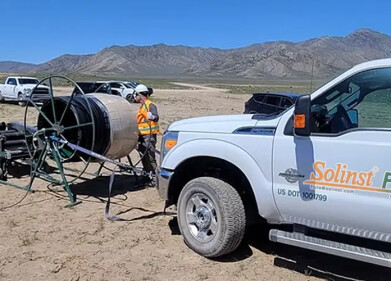Business News
COP27 fails to adequately address one of the biggest contributors of CO2 emissions
Nov 24 2022
Recent COP27 negotiations once again failed to appropriately address wildfires, which are responsible for up to 20% of global CO2 emissions. This is the view of Dryad Networks (Dryad), the only provider of solar-powered environmental sensor networks for ultra-early wildfire detection, which believes that, unless increasingly severe wildfires are given adequate attention and investment, global temperatures will rise by more than 1.5C, a commitment that already hangs in the balance.
Other top emitters, including the power sector, heavy industry, and intensive agriculture had dedicated days during the two-week conference, and sustainable transport was high on the agenda on the final day focussed on solutions. But despite contributing 6.5 billion tonnes of CO2 to total global emissions annually, wildfires were not sufficiently addressed.
The problem is only set to get more precarious. Eight of the worst wildfire seasons on record have occurred in the last decade, and wildfires are becoming more widespread, burning nearly twice as much tree cover today as they did 20 years ago. If the 1.5C target slips and we reach two degrees of warming, recent data from the UN Environment Programme show that we will see 62% more burned areas. If we reach three degrees that figure rises to 97%.
A big part of the issue is that the extent of wildfire emissions is often miscalculated or underestimated. Wildfires are consistently discounted from countries’ CO2emissions reporting as they’re written off as carbon neutral ‘natural phenomena’. However, with 80% of wildfires caused by humans, and the fact that carbon neutrality is reliant on forest regrowth, which can take over 100-years, Dryad argues that omitting emissions from global CO2 inventories is both inaccurate and cynical – it leads to inaction on tackling a significant emitter.
“Some estimates, for example, use Carbon and CO2 interchangeably, but doing so misrepresents the amount of CO2 emissions that wildfires emit and therefore perpetuates inaction,” says Carsten Brinkschulte, CEO, Dryad. “CO2 is 3.7 times heavier than Carbon, which means that when we measure the amount of Carbon emitted by wildfires and compare that to the CO2 emissions of other sectors, we are underrepresenting the severity of the wildfire problem by a factor of 3.7.
“The most common statistic that gets thrown around is from 2021 and states that wildfires emit 1.76 billion metric tonnes of Carbon globally. That figure is then used interchangeably with CO2. However, when calculated correctly, global CO2 emissions of wildfires are a whopping 6.5 billion metric tonnes.”
Increased attention and investment on tackling wildfires are mission critical. At present, government wildfire funds mostly focus on firefighting rather than detection or prevention. While it is essential to support emergency service workers and firefighters responding on the frontline, the deployment of new, affordable wildfire detection technology is low-hanging fruit when defending forests. The ability to detect fires earlier, when they are still easy to extinguish, drastically reduces CO2 emissions, because the fires can be extinguished easily before they spread out of control.
If wide-scale implementation of early detection technologies were to occur, it would prevent the emission of hundreds of millions of tonnes of CO2 and save our precious and vital forests. Dryad calculates that deploying 120 million of its sensors worldwide by 2030 could cumulatively save up to 3.9m hectares of forest from burning and prevent 1.7bn tons of CO2 emissions.
In addition, wildfire prevention could form part of the carbon credit framework, put forward by the US at the conference to help fund the energy transition of developing countries and contribute to loss and damage compensation. By applying detection technology to wildfire-prone forested areas in developing countries, carbon credits could be awarded per wildfire prevention, with sensor and IoT technology making detection reliable, and data led.
Digital Edition
AET 28.4 Oct/Nov 2024
November 2024
Gas Detection - Go from lagging to leading: why investment in gas detection makes sense Air Monitoring - Swirl and vortex meters will aid green hydrogen production - Beyond the Stack: Emi...
View all digital editions
Events
Jan 12 2025 Abu Dhabi, UAE
Jan 14 2025 Abu Dhabi, UAE
Jan 20 2025 San Diego, CA, USA
Carrefour des Gestions Locales de L'eau
Jan 22 2025 Rennes, France
Safety, Health & Wellbeing LIVE
Jan 22 2025 Manchester, UK



















